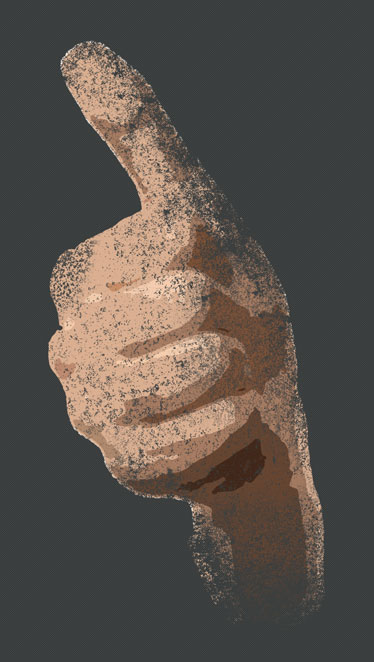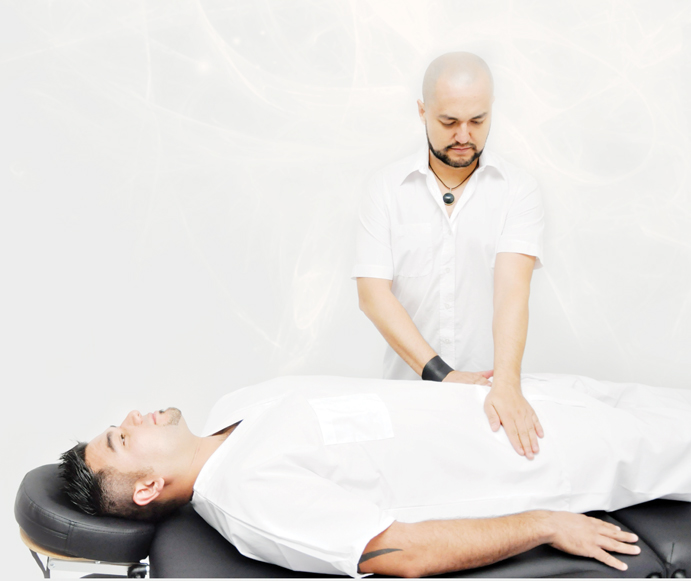

Receiving a diagnosis of any life threatening illness is devastating. We like to think we’re prepared to handle such enormous news but the reality is, we have no idea how we’ll react until we’re actually in the situation. As soon as we hear “you are HIV positive,” “you have cancer,” or even “you have diabetes” your life changes completely in that one instant. Doctors may give you some words of condolences with your test results but not always provide you with a guide on how to live your life from that moment onward. You’re sometimes left to deal with the questions, “What now?” and “how am I going to deal with this?” Leaving the doctor’s office, you might feel as though you’ll never be able to come to terms with being confronted with your own mortality.
Everyone reacts to pain differently and the same applies to the distress of being diagnosed with HIV. Many people fall into a deep depression afterwards. They fear how family and friends will view them after learning they have HIV. There have misconceptions to confront, like belief that they will not be able to live a normal life or that they will die prematurely. However, people living with HIV live up to 30 more years after infection due to the fact that medication and treatment have improved so drastically But even though treatments have improved so much throughout the years, many people still experience a deep depression after their diagnosis. According to the National Institute of Mental Health (NIMH), “A person experiencing the distress of being diagnosed with HIV may indeed need treatment, most likely for an adjustment reaction, but the distress will respond to supportive and other types of psychotherapy rather than medications.”
The way pills help suppress the virus from compromising the immune system, wouldn’t it be amazing if there was a similar pill to manage the inner turmoil of a life-changing diagnosis? The good news is this pill is already within each of us – we just have to realize it has always been there. We have to find the inner strength to face our problems and learn how to cope by adjusting our attitude. Like Gustavo Diaz, from AIDS Empowerment said “I’m positive, so I’m going to live a positive life.” It’s important to remember that life goes go on after you test positive; that it’s what you make of the rest of your life that matters.
Fortunately, we live in a society where there is a range of services and resources that are available to people who have HIV. Most HIV/AIDS clinics have social workers and counselors who can help individuals deal with their problems. The article “Coping with HIV/AIDS: Mental Health,” says that “ It is normal to have strong reactions when you find out you are HIV positive, including feelings such as fear, anger, and a sense of being overwhelmed. Often people feel helpless, sad, and anxious about the illness. Feelings come and g but you have choices about how you respond to your feelings” (UCSF, 2011).
Having a positive outlook on your diagnosis will help you gain more control of your status, ease the emotional stress, and help ensure the health of you, your partners and ultimately, your community. And that’s something we can all strive to achieve, regardless of status.


An Interview with Julio Cesar Gutierrez, Master Reiki Specialist
Bloke: Hello Julio, so tell us what is Reiki?
Julio: Reiki is a form of spiritual healing using “universal life energy” channeled through the practitioner to the recipient.
Bloke: What does that mean?
Julio: I channel energy through the palms of my hands to the patients. There is no pressure on the body making it ideal for treating all ages and conditions, sometimes hands are even held away from the body.
Bloke: Where does this technique come from?
Julio: This is a technique from Japan its been used for years. I actually studied in a Japanese school based in Mexico.
Bloke: Very interesting. What is Rieki used for?
Julio: Rieki can be used for many ailments like reducing stress, relieving pain, headaches, stomach upsets, back problems, asthma- respiratory problems, PMT, menstrual problems, sinus, anxiety and many more.
Bloke: Wow it sounds like an incredible spiritual feeling.
Julio: It certainly is and the experience is different for every person.
Bloke: How long have you been practicing this technique?
Julio: Since 2005
Bloke: How does someone go about booking a session?
Julio: I can be reached by calling 915-342-8665
Bloke: Thank you Julio we are looking forward to our session!

Myth: Two condoms are better than one.
Fact: The concept of wearing more than one condom seems to make sense because there would be double the protection, right? Wrong. This is not true because it’s all about friction. Latex grinding on latex causes quick tearing, breaking, and slipping of the condom.
Myth: I do not need to use a condom, my partner looks clean.
Fact: The majority of the time, no one (not even a doctor) can tell if someone has contracted an STD or HIV. Looking at someone’s physical appearance or genitals cannot be a standard detection tool to diagnose someone with an STD or HIV. The symptoms of STDs and HIV can often be invisible throughout the body. Just because there are no symptoms, it doesn’t mean it’s safe to assume that a person is disease free. The accurate way of finding out if a person is carrying an STD or HIV is to get tested. Get tested together!
Myth: HIV Positive people look ill.
Fact: With advancements in medical treatment for HIV/AIDS patients, fewer people are dying nowadays. HIV/AIDS patients are able to live longer and healthier lives. People often assume that HIV positive individuals look ill and are able to tell if they have the virus. Like the saying goes “Don’t judge a book by its cover.” They only way to find if someone has come in to contact with the virus is by getting tested.
Myth: If you have sex in a pool or hot tub, the chlorine will kill any virus or disease your partner may be carrying.
Fact: May sound crazy, but due to poor sex education, many young adults believe this suburban legend. Chlorine is not a disinfectant and will not kill STD-causing bacteria or virus. It will not kill sperm. Chlorine is not a contraceptive or barrier against disease. A condom is. And latex condoms in hot tubs can break down.
Myth: Oral sex is safe sex.
Fact: Oral sex like any other type of sexual activity that can put you at risk of obtaining an STD or HIV. Oral sex is not always safe sex. Giving and receiving oral sex can transmit infections. Studies show that pre-ejaculate or pre-cum can also cause infections, especially if there's an open sore in your mouth or if your gums are bleeding. Always use a condom or dental dam when engaging in oral sex.
Myth: One STD at a time.
Fact: Many people have the misconception that they can only be infected with one STD at a time and that is false. An individual can be diagnosed with multiple STDs if there is a lack of medical attention. Neglecting to treat an STD can also increase the chances of attaining HIV due open sores from syphilis or genital herpes.
Myth: You can become infected with HIV from hugging or holding hands with an HIV infected person.
Fact: “HIV cannot be transmitted through...
toilet seats or door-knob handles. touching, hugging, holding hands, or cheek kissing with an HIV-infected person. sharing eating utensils with an HIV-infected person. mosquito bites.
You get HIV from coming into contact with the bodily fluids of an HIV-positive person. Ingesting the semen, pre-ejaculate fluid, vaginal fluids, blood, breast milk of an infected person are all potential health risks. HIV is also transmitted through needles contaminated with HIV-infected blood, including needles used for injecting drugs, tattooing or body piercing.
Myth: You can get HIV by kissing an HIV-infected person.
Fact: Casual contact through closed-mouth or "social" kissing is not a risk for transmission of HIV. Technically, there is the risk of coming into contact with blood during open-mouthed tongue kisses, so the Center for Disease Control advises against French-kissing an infected person. But, no cases of AIDS have been attributed to any kind of kissing.
